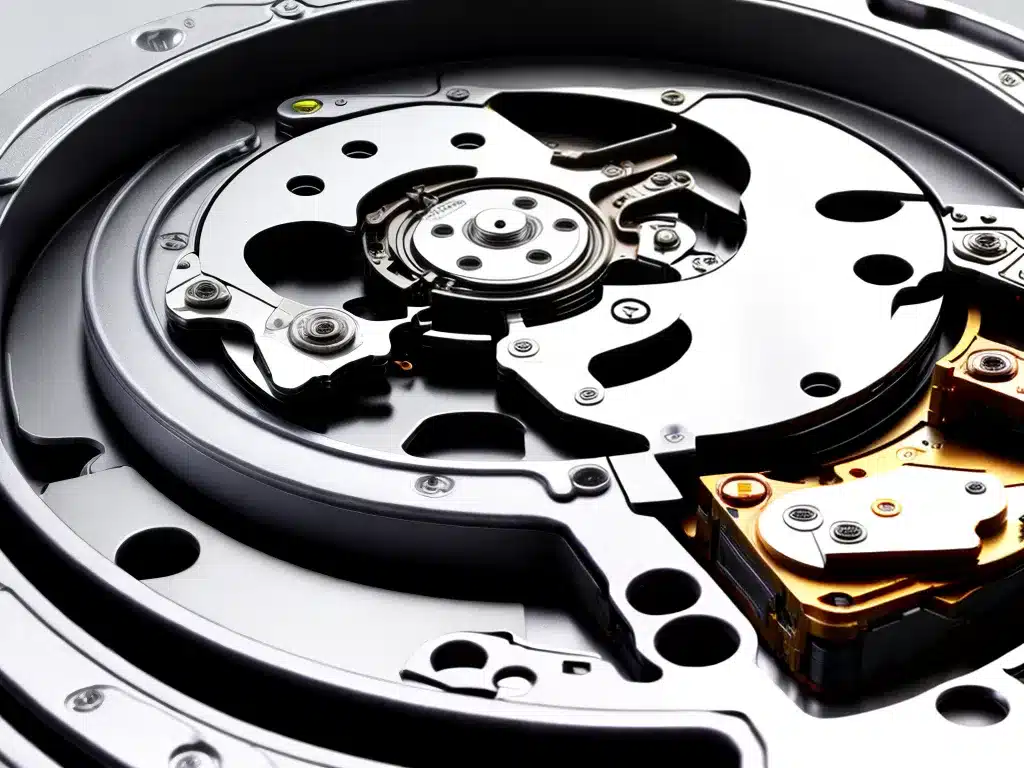
Overview
Hard drives store data magnetically on spinning platters inside the drive enclosure. When a hard drive is damaged, the data stored on it remains intact until it is overwritten by new data. How long the data persists depends primarily on the type and extent of damage to the drive.
With the right tools and techniques, data can often be recovered from damaged drives, unless the damage is so severe it prevents the drive from spinning up and being accessed. Our guide examines the various types of hard drive damage and provides estimates on how long data may still be recoverable from each.
Physical Damage to Platters
The magnetic platters inside a hard drive store all the data bits. If the platters become warped, scratched, or otherwise sustain physical damage, data loss occurs in the affected areas.
-
Light platter damage may create bad sectors where data cannot be read. But most data remains intact and recoverable.
-
Moderate platter damage can prevent large amounts of data from being read. But data in unaffected areas can still be recovered.
-
Severe platter damage can make entire platters unreadable. But platters without physical defects can still be accessed to recover data stored on them.
So even with physical platter damage, some or most data is often still recoverable, unless damage encompasses the entire drive.
Logical Failures of Drive Circuitry
The circuit boards and integrated circuits in a hard drive control the reading and writing of data. If these electronic components malfunction or fail, logical data errors occur.
Logical failures prevent access to some or all data, but do not physically damage platters. So data remains intact and recoverable, using specialized tools and techniques.
-
Corrupted firmware, failed motors, or interface problems may create logical failures. Data recovery first involves repairing or bypassing failed components.
-
Formatting the drive or rewriting the master boot record can make data inaccessible. But it still exists on platters until overwritten.
-
Short circuits, failed read/write heads, and degraded magnetics associated with aging can cause logical data errors. But underlying data remains readable via low-level recovery methods.
In summary, logical failures do not immediately erase data. The data remains retrievable until overwritten by new data. Recovery success depends on the severity of the logicial failure and tools used.
Extent of Data Overwrites
When a hard drive is still in use, existing data gets overwritten gradually with new data during normal operation. The longer the damaged drive continues operating, the higher the chance important data gets overwritten and unrecoverable.
-
Light overwriting affects only scattered sectors, minimal data is lost.
-
Moderate overwriting over time degrades recoverability, but most data still intact.
-
Heavy overwriting of media makes large amounts of data unrecoverable.
So for highest success rates, recovery should be attempted as early as possible before heavy overwriting occurs.
Data Recovery Difficulty Scale
This table provides general timeframes during which data recovery is very likely, unlikely, or impossible based on drive damage:
|Type of Damage|Data Recovery Difficulty|Timeframe|
|-|-|-|
|Light platter damage|Very likely|Up to 3 years|
|Moderate platter damage|Very difficult|Up to 1 year|
|Severe platter damage |Impossible|Days to weeks|
|Logical failures|Very likely|Up to 5 years|
|Light overwriting|Very likely|Up to 3 years|
|Moderate overwriting|Difficult|Up to 1 year|
|Heavy overwriting|Impossible|Days to weeks|
Key Factors Affecting Data Retention
To summarize, here are the key factors affecting how long data persists on damaged hard drives:
-
Type of damage – physical or logical – and severity level. Logical damage does not immediately erase data.
-
Extent of overwrites – The more overwriting of media, the less recoverable data.
-
Time elapsed – Attempt recovery ASAP before heavy overwriting. Within 1-5 years very likely.
-
Environment – Heat accelerates magnetic decay. Undamaged areas retain data longer in stable environments.
-
Recovery tools and techniques – Advanced recovery methods can retrieve data even from heavily damaged drives.
Conclusion
Damaged hard drives can often retain recoverable data for up to several years if logical failures or light physical damage occurred. But time is critical – the longer the delay before recovery is attempted, the lower the success rate. Follow best practices like removing drives from operation immediately after damage and consulting a professional recovery firm for assistance.












